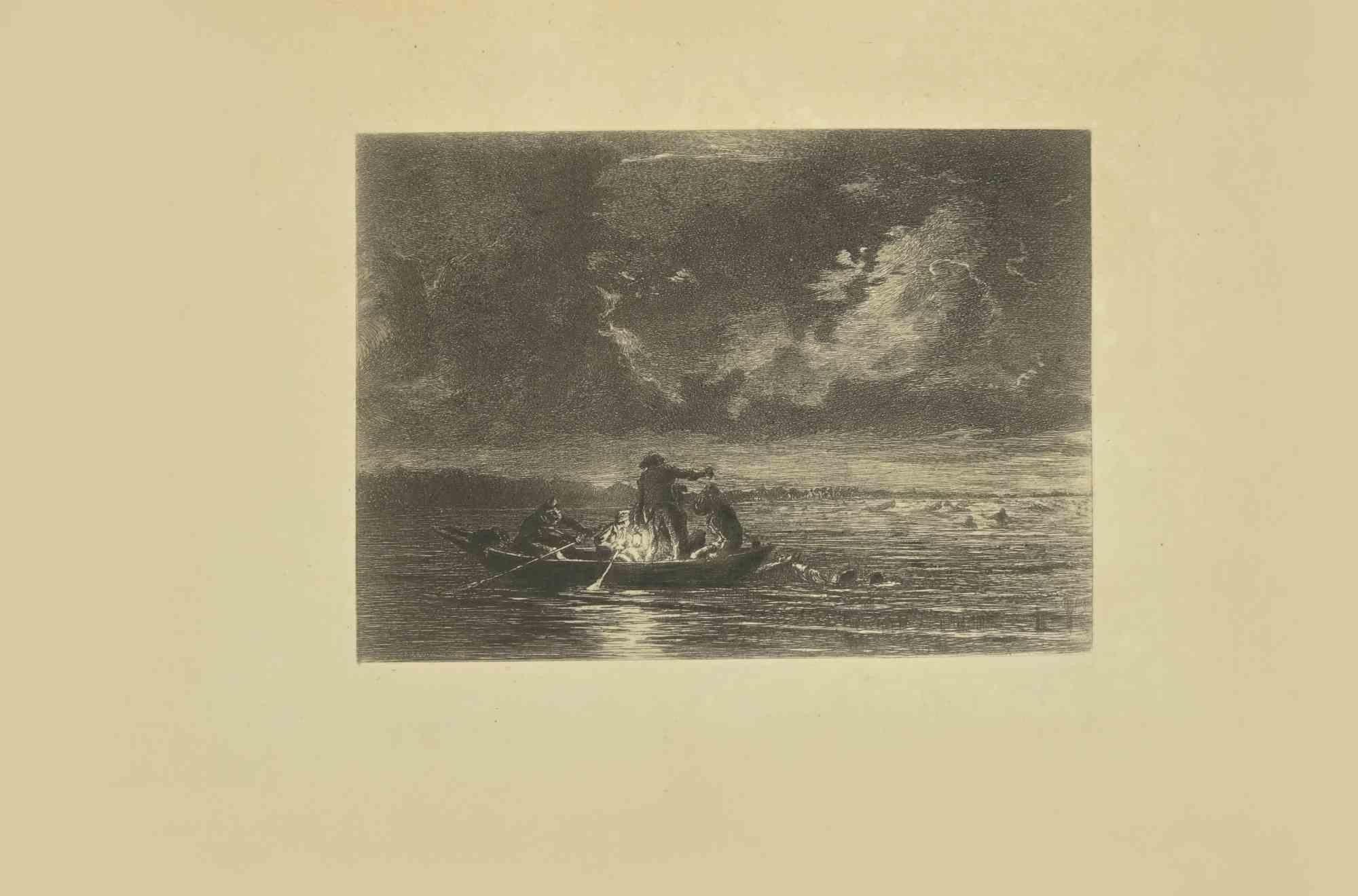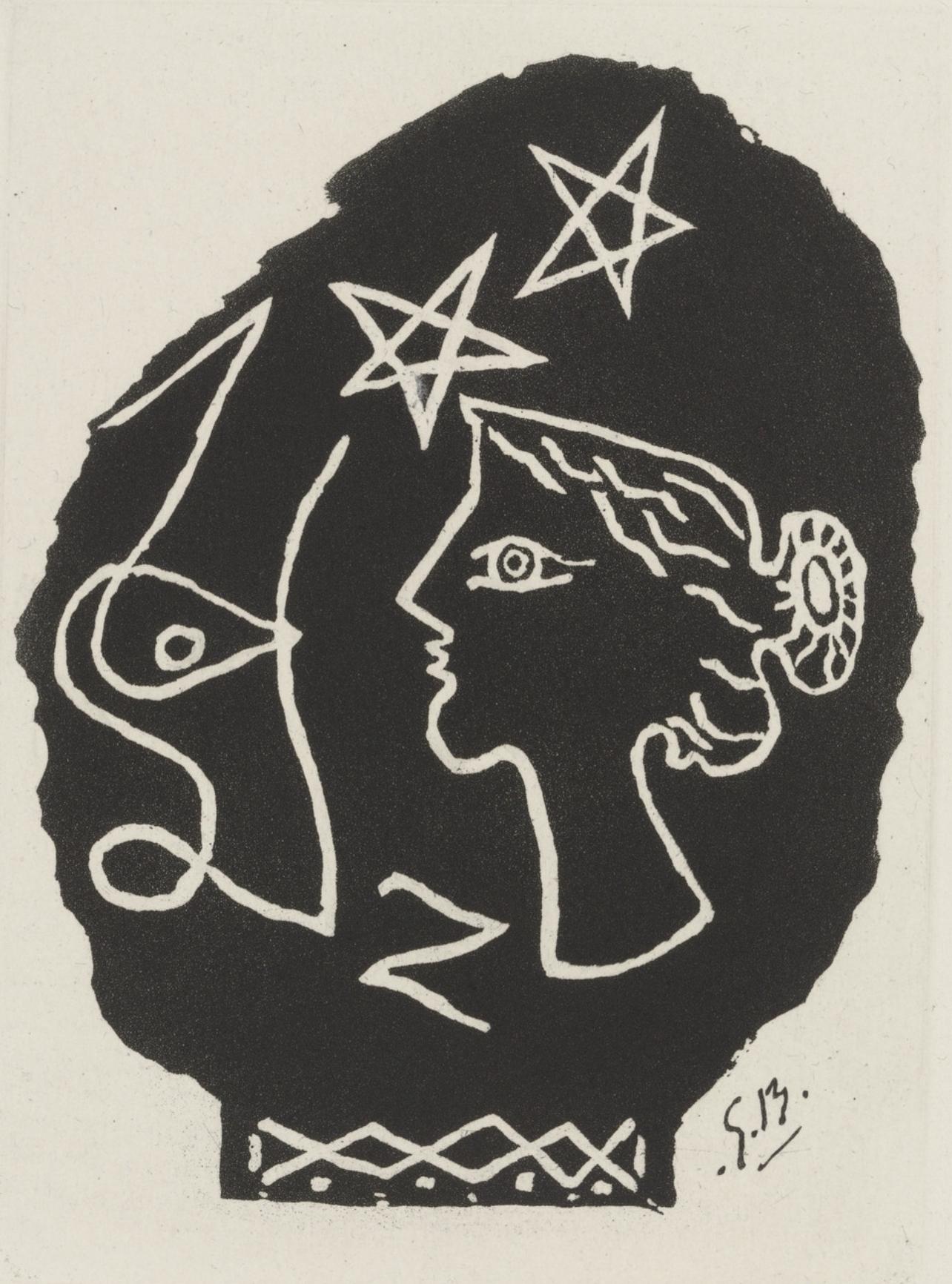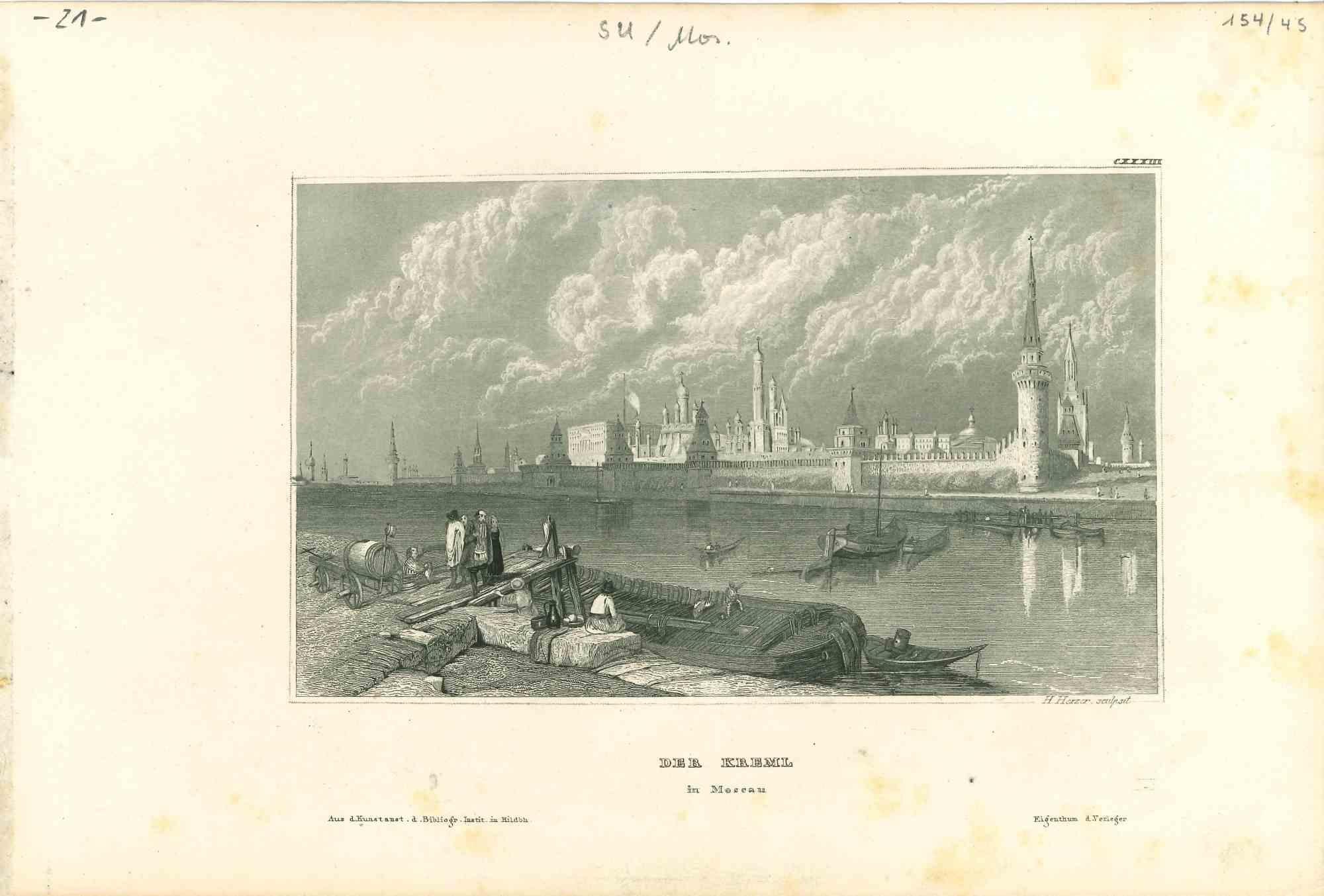Items Similar to Léger, Composition, Du cubisme (after)
Want more images or videos?
Request additional images or videos from the seller
1 of 7
Léger, Composition, Du cubisme (after)1947
1947
About the Item
Aquatint, Engraving on vélin du Lana Papiers Spéciaux pure rag paper. Unsigned and unnumbered, as issued. Good Condition. Notes: From the folio, Du Cubisme, 1947. Published by Compagnie Française des Arts Graphiques, Paris; printed by R. Girard et Cie, Paris, 1947. Excerpted from the folio (translated from French), Du Cubisme was completed to print on July 31, 1947. The draw includes, No. 1, Copy on paper from Auvergne with a few states and two suites of the plates; No. 2 to 20, Copies on paper from Auvergne with two suites of the plates; No. 21 to 35, Copies on paper from Auvergne with a series of plates; Nos 36 to 435. Copies on pure Lana thread paper; In addition, it was printed 20 copies on Lana paper numbered in Roman numerals for the Legal Deposit and collaborators.
FERNAND LEGER (1881-1955) was a French painter, sculptor, and filmmaker. In his early works he created a personal form of cubism (known as "tubism") which he gradually modified into a more figurative, populist style. His boldly simplified treatment of modern subject matter has caused him to be regarded as a forerunner of pop art. Léger was born in Argentan, Orne, Lower Normandy, where his father raised cattle. Fernand Léger initially trained as an architect from 1897 to 1899, before moving in 1900 to Paris, where he supported himself as an architectural draftsman. After military service in Versailles, Yvelines, in 1902–1903, he enrolled at the School of Decorative Arts after his application to the École des Beaux-Arts was rejected. He nevertheless attended the Beaux-Arts as a non-enrolled student, spending what he described as "three empty and useless years" studying with Gérôme and others, while also studying at the Académie Julian. He began to work seriously as a painter only at the age of 25. At this point his work showed the influence of impressionism, as seen in Le Jardin de ma mère (My Mother's Garden) of 1905, one of the few paintings from this period that he did not later destroy. A new emphasis on drawing and geometry appeared in Léger's work after he saw the Cézanne retrospective at the Salon d'Automne in 1907. In 1909, he moved to Montparnasse and met Alexander Archipenko, Jacques Lipchitz, Marc Chagall, Joseph Csaky and Robert Delaunay. In 1910, he exhibited at the Salon d'Automne in the same room (salle VIII) as Jean Metzinger and Henri Le Fauconnier. In his major painting of this period, Nudes in the Forest, Léger displays a personal form of Cubism that his critics termed "Tubism" for its emphasis on cylindrical forms. In 1911, the hanging committee of the Salon des Indépendants placed together the painters identified as 'Cubists'. Metzinger, Albert Gleizes, Le Fauconnier, Delaunay and Léger were responsible for revealing Cubism to the general public for the first time as an organized group. The following year he again exhibited at the Salon d'Automne and Indépendants with the Cubists, and joined with several artists, including Le Fauconnier, Metzinger, Gleizes, Francis Picabia and the Duchamp brothers, Jacques Villon, Raymond Duchamp-Villon and Marcel Duchamp to form the Puteaux Group—also called the Section d'Or (The Golden Section) paintings, from then until 1914, became increasingly abstract. Their tubular, conical, and cubed forms are laconically rendered in rough patches of primary colors plus green, black and white, as seen in the series of paintings with the title Contrasting Forms. Léger made no use of the collage technique pioneered by Braque and Picasso.
About the Seller
4.9
Platinum Seller
These expertly vetted sellers are 1stDibs' most experienced sellers and are rated highest by our customers.
Established in 2002
1stDibs seller since 2021
856 sales on 1stDibs
Typical response time: <1 hour
- ShippingRetrieving quote...Ships From: Auburn Hills, MI
- Return PolicyA return for this item may be initiated within 1 day of delivery.
Auctions on 1stDibs
Our timed auctions are an opportunity to bid on extraordinary design. We do not charge a Buyer's Premium and shipping is facilitated by 1stDibs and/or the seller. Plus, all auction purchases are covered by our comprehensive Buyer Protection. Learn More
More From This SellerView All
- Braque, Composition, Du cubisme (after)By Georges BraqueLocated in Auburn Hills, MIAquatint, Etching on vélin du Lana Papiers Spéciaux pure rag paper. Unsigned and unnumbered, as issued. Good Condition. Notes: From the folio, Du Cubisme, 1947. Published by Compagni...Category
1940s Modern Landscape Prints
MaterialsAquatint, Etching
- Duchamp, Le Cheval, Composition, Du cubisme (after)By Marcel DuchampLocated in Auburn Hills, MIEtching, Engraving, Drypoint on vélin du Lana Papiers Spéciaux pure rag paper. Unsigned and unnumbered, as issued. Good Condition. Notes: From the folio, Du Cubisme, 1947. Published ...Category
1940s Modern Landscape Prints
MaterialsEngraving, Etching, Drypoint
- Gris, Composition, Du cubisme (after)By Juan GrisLocated in Auburn Hills, MIEtching, Engraving on vélin du Lana Papiers Spéciaux pure rag paper. Unsigned and unnumbered, as issued. Good Condition. Notes: From the folio, Du Cubisme, 1947. Published by Compagn...Category
1940s Modern Landscape Prints
MaterialsEtching, Engraving
- Derain, Figure, Du cubisme (after)By André DerainLocated in Auburn Hills, MIEtching, Engraving on vélin du Lana Papiers Spéciaux pure rag paper. Unsigned and unnumbered, as issued. Good Condition. Notes: From the folio, Du Cubisme, 1947. Published by Compagn...Category
1940s Modern Landscape Prints
MaterialsEngraving, Etching
- Picabia, Composition, Du cubisme (after)By Francis PicabiaLocated in Auburn Hills, MIDrypoint on vélin du Lana Papiers Spéciaux pure rag paper. Unsigned and unnumbered, as issued. Good Condition. Notes: From the folio, Du Cubisme, 1947. Published by Compagnie Françai...Category
1940s Modern Landscape Prints
MaterialsDrypoint
- Gleizes, Composition, Du cubisme (after)By Albert GleizesLocated in Auburn Hills, MIDrypoint on vélin du Lana Papiers Spéciaux pure rag paper. Unsigned and unnumbered, as issued. Good Condition. Notes: From the folio, Du Cubisme, 1947. Published by Compagnie Françai...Category
1940s Modern Landscape Prints
MaterialsDrypoint
You May Also Like
- Ludgate HillBy William Walcot R. E. Hon. R. I. B. A.Located in Middletown, NYEtching with drypoint and aquatint on light cream wove paper, 5 1/2 x 5 inches (140 x 122 mm), full margins. Signed in pencil in the lower margin. One of a total of 400 signed impres...Category
Early 20th Century Modern Landscape Prints
MaterialsDrypoint, Etching, Aquatint
- La petite marine -- Souvenir de Medway. (Little Seascape, a Remembrance of the MBy Félix Hilaire BuhotLocated in Storrs, CTLa petite marine -- Souvenir de Medway. (Little Seascape, a Remembrance of the Medway). 1879. Etching, drypoint, false biting, aquatint, and stop-out. Bourcard-Goodfriend catalog 15...Category
1870s Modern Landscape Prints
MaterialsDrypoint, Etching, Aquatint
- The TyneBy William Walcot R. E. Hon. R. I. B. A.Located in Storrs, CTThe Tyne. 1922. Etching and drypoint. Dickins 73. 5 7/8 x 7 7/8 (sheet 9 3/4 x 12 1/2). Series: The Arteries of Great Britain. Edition 425. A fine proof with tonal wiping and more of a sepia coloring, printed on "J.Green & Son' cream-wove paper. Signed in pencil. The image looks down on the open Swing Bridge, from the High-Level Bridge, Newcastle upon Tyne. The boats carry timber and coal. The complete set of The Arteries of Great Britain includes The Thames, The Tyne, The Forth, The Clyde, and The Mersey. Architectural draughtsman, etcher. Born in Lustdorf, near Odessa, Russia, to a British father and Russian mother. Traveled extensively with his family before studying architecture in St Petersburg, with further studies at Ecole des Beaux-Arts and Atelier Redan, Paris. Practiced architecture in Moscow and was co-designer of the Metropole Hotel, in 1898. Moved to London in 1907 and was employed as an architectural perspectivist. After a sponsored visit to Rome and Venice he had a solo exhibit at the Fine Art Society, 1912, 'Watercolours of London and Venice'; followed by a further four shows. He also exhibited at the Royal Academy, Royal Society of British Artists, Royal Society of Painter-Etchers..., and Connell & Sons. His etchings were published in London by H C Dickens,1913-24, and a folio of his work 'Architectural watercolors and etchings of William Walcot' was published, in 1919. Elected RE, 1920; FRIBA, 1922; Associate British School at Rome. A foremost architectural draughtsman, he worked from studios in London, Oxford and Rome. The complete set of The Arteries of Great Britain includes: The Thames, The Tyne, The Forth, The Clyde, The Mersey. Signed in pencil .Housed in a 16 x 20 inch mat suitable for framing. Opened in 1890, the Forth Bridge...Category
Early 20th Century Modern Landscape Prints
MaterialsDrypoint, Etching, Aquatint
- San Marco [Venice].By William Walcot R. E. Hon. R. I. B. A.Located in Storrs, CTWilliam Walcot. R.E., R.I.B.A. San Marco. Etching with drypoint and aquatint. Dickins 66, Harvey-Lee 91. 3 7/8 x 5 7/8 (sheet 9 1/4 x 12 1/8). Venice set, # 2. Edition 415. A rich impression printed on cream wove paper. Fold in the margin, well outside the image; otherwise good condition. Signed in pencil. Housed in a 16 x 20-inch archival mat. Soon after Walcot's arrival in England, the Fine Art Society sponsored a trip sent to Italy. This scene is one of four small drypoints that resulted from the artist’s stay in Venice. When he was seventeen, he began to study architecture under Louis Benois at the Imperial Academy of Art in Saint Petersburg. He went to Paris where he continued his studies at the Ecole des Beaux-Arts and the Atelier Redon. He practiced as an architect briefly in Moscow, designing the Hotel Metropole...Category
Early 20th Century Modern Landscape Prints
MaterialsDrypoint, Etching, Aquatint
- Loading Barges on the ThamesBy William Walcot R. E. Hon. R. I. B. A.Located in Storrs, CTLoading Barges on the Thames. 1922. Etching with drypoint and aquatint. Dickins 72. 4 5/8 x 13 1/8 (sheet 9 3/8 x 15 1/2). Series: The Arteries of Great Britain. Edition 425. A fine proof with tonal wiping, printed on 'J. Whatman' wove paper. Signed in pencil. The complete set of The Arteries of Great Britain includes The Thames, The Tyne, The Forth, The Clyde, and The Mersey. Architectural draughtsman, etcher. Born in Lustdorf, near Odessa, Russia, to a British father and Russian mother. Traveled extensively with his family before studying architecture in St Petersburg, with further studies at Ecole des Beaux-Arts and Atelier Redan, Paris. Practiced architecture in Moscow and was co-designer of the Metropole Hotel, in 1898. Moved to London in 1907 and was employed as an architectural perspectivist. After a sponsored visit to Rome and Venice he had a solo exhibit at the Fine Art Society, 1912, 'Watercolours of London and Venice'; followed by a further four shows. He also exhibited at the Royal Academy, Royal Society of British Artists, Royal Society of Painter-Etchers..., and Connell & Sons. His etchings were published in London by H C Dickens,1913-24, and a folio of his work 'Architectural watercolors and etchings of William Walcot' was published, in 1919. Elected RE, 1920; FRIBA, 1922; Associate British School at Rome. A foremost architectural draughtsman, he worked from studios in London, Oxford, and Rome. The complete set of The Arteries of Great Britain includes: The Thames, The Tyne, The Forth, The Clyde, The Mersey. Signed in pencil .Housed in a 16 x 20 inch mat suitable for framing. Opened in 1890, the Forth Bridge...Category
Early 20th Century Modern Landscape Prints
MaterialsDrypoint, Etching, Aquatint
- Ludgate HillBy William Walcot R. E. Hon. R. I. B. A.Located in Storrs, CTLudgate Hill. 1921. Etching, aquatint, and drypoint. Dickins 69. 5 5/8 x 5 1/8 (sheet 13 5/8 x 9 3/4). A fine proof with plate tone, printed on 'J Wha[tman] cream wove paper. Edition of 275 for the UK and 125 for the US. Signed in pencil. Ludgate Hill is a street that runs west from St. Paul's Churchyard to Ludgate Circus (built in 1864), and from there becomes Fleet Street. The Ludgate Hill railway station, between Water Lane and New Bridge Street, is a station of the London, Chatham, and Dover Railway. It was closed before World War II and the railway bridge and viaduct between Holborn Viaduct and Blackfriars stations was demolished in 1990 to enable the construction of the City Thameslink railway station in a tunnel. This also involved the regrading of the slope of Ludgate Hill at the junction. About halfway up Ludgate Hill is St Martin, Ludgate church. This was physically joined to the Ludgate. When he was seventeen, William Walcot began to study architecture under Louis Benois at the Imperial Academy of Art in Saint Petersburg. He went to Paris where he continued his studies at the Ecole des Beaux-Arts and the Atelier Redon. He practiced as an architect briefly in Moscow, designing the Hotel...Category
Early 20th Century Modern Landscape Prints
MaterialsDrypoint, Etching, Aquatint





